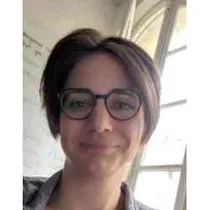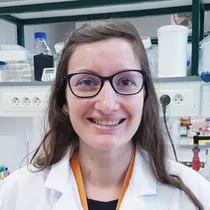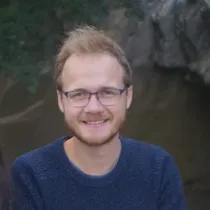- Accueil >
- Publications >
- Quantifying cell traction forces at the single-fiber scale in 3D: An approach based on deformable photopolymerized fiber arrays
Quantifying cell traction forces at the single-fiber scale in 3D: An approach based on deformable photopolymerized fiber arrays
Auteurs
Pierre Ucla, Joanne Lê-Chesnais, Henri Ver Hulst, Xingming Ju, Isabel Calvente, Elnaz Nematollahi, Ludovic Leconte, Jean Salamero, Isabelle Bonnet, Catherine Monnot, Hélène D. Moreau, Jessem Landoulsi, Vincent Semetey, Sylvie Coscoy
Résumé
The forces exerted by cells upon the fibers of the extracellular matrix play a decisive role in cell motility in physiopathology. How the local physical properties of the matrix (density, stiffness, orientation) affect cellular forces remains, however, poorly understood. Existing approaches to measure cell three-dimensional (3D) traction forces within fibrous substrates lack control over the local properties and rely on continuum approaches, not suited for measuring forces at the scale of individual fibers. Herein, an approach is proposed to fabricate multilayer arrays of suspended deformable fibers spanning a wide range of fine-tunable geometrical and mechanical properties using two-photon polymerization. Atomic Force Microscopy is used to thoroughly investigate the properties of individual fibers, including Young’s modulus and stiffness. This approach is combined with a reference-free method for measuring traction forces in 3D, which relies on automated segmentation of the fibers coupled with finite element modeling. The force measurement pipeline is applied to study forces exerted by endothelial cells, fibroblasts, or macrophages, and reveals how these forces are influenced by fiber density and stiffness. Additionally, coupling to fast volumetric imaging with lattice light-sheet microscopy enables the measurement of the low-intensity and short-lived tractions exerted by amoeboid cells, such as dendritic cells. Our technology will be instrumental for monitoring and studying cell behavior at the single-fiber level at extracellular matrix density interfaces, which play a crucial role in both physiological and pathological contexts, such as tumor boundaries.
Membres

SYLVIE COSCOY
Directeur de recherche CNRS
ISABELLE BONNET
Sorbonne Université



